Knowing the common asters adds enjoyment to a fall walk
Peterborough Examiner – September 23, 2022 – by Drew Monkman
I often walk the Trans Canada Trail from the bottom of Wallis Drive up past Lily Lake to Ackison Dr. I love paying attention to what’s in bloom, what leaves are changing colour, and what shrubs are bearing fruit. With a light rain falling, I headed up the trail this past Sunday to reacquaint myself with a delightful but sometimes challenging group of wildflowers: the asters. As the yellow surf of goldenrod now begins to fade, the aster parade has moved to centre stage.
The name aster comes from the Greek word for “star” and refers to the shape of the flower. Their white, purple and mauve star-like blossoms are abundant right now in most every habitat. Some, like the large-leaved aster, can even be found in woodlands.
The Kawarthas is home to about 17 species bearing the aster name. They were all once considered to be in the genus Aster. However, after genetic research in the 1990s, North American asters were reclassified into 10 different genera, though all are treated within the same tribe, Astereae. Many of our local asters have now been assigned to the genus Symphyotrichum.
Identification can sometimes be difficult, especially among the white asters. There can be variability even within the same species. However, it’s certainly possible to learn the most common species. The iNaturalist app is especially useful for identification purposes and fun to use. Pay attention to the Latin name because the common names can vary.
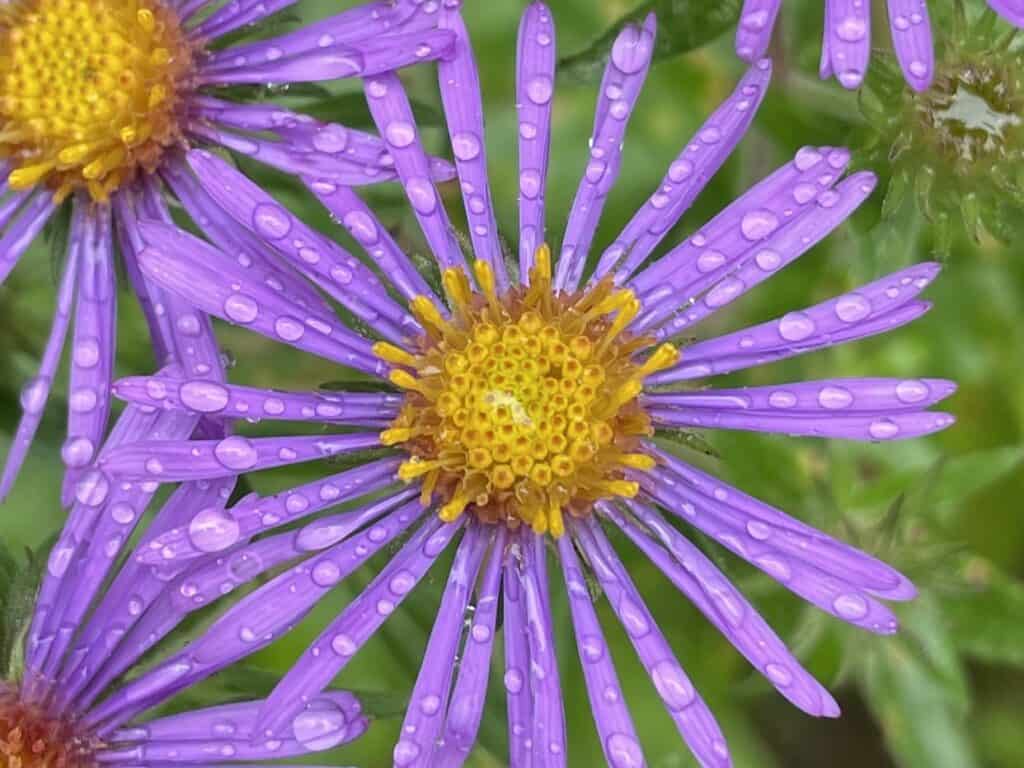
Keep in mind that asters have composite flowers, more accurately known as inflorescences. These are clusters of little flowers that seem like one big flower. In the centre are tiny disc flowers, all tightly packed together. Growing around them are individual ray flowers, the so-called petals. The ray flowers of asters are either female and have a pistil, or no sex organs present at all. Disc flowers can have both male and female parts, or be just male, with only pollen-producing stamens. This means that in many cases, both ray and disc flowers can produce seeds. The disc flowers tend to darken as the inflorescence ages.
Common asters to learn
As I walked along the trail, I was easily able to find six common species.
1. New England aster: The New England aster (Symphyotrichum novae-angliae) is by far the showiest and most beautiful of these wildflowers. Growing a metre or more tall, its big inflorescences (up to 3 cm) have numerous (50-75) deep-violet ray flowers and orange-yellow disc flowers. It is the contrast between the two flower-types that really make this plant stand out. The leaves are crowded together, clasp the rough stem and smell a bit spicy when crushed. New England aster attracts numerous insects and is a favorite nectar source for monarch butterflies as they migrate south to Mexico. Native asters like the New England are a great addition to your garden and provide lots of fall colour.
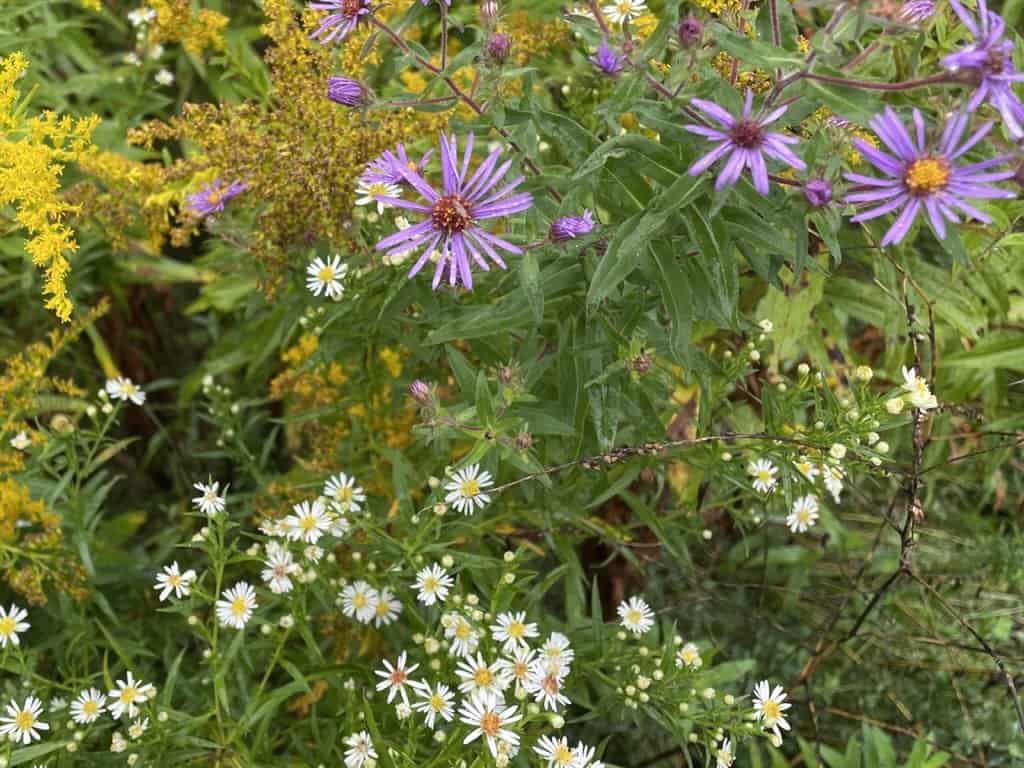
2. Swamp aster: Growing in wet areas, the swamp asters (Symphyotrichum puniceum) is similar to the New England but with a somewhat crooked and usually (not always) purple stem. Their other common name is purple-stemmed aster. The inflorescences are large (2.5 cm) with 30-50 light violet ray flowers. The disc flowers are yellow becoming purple.
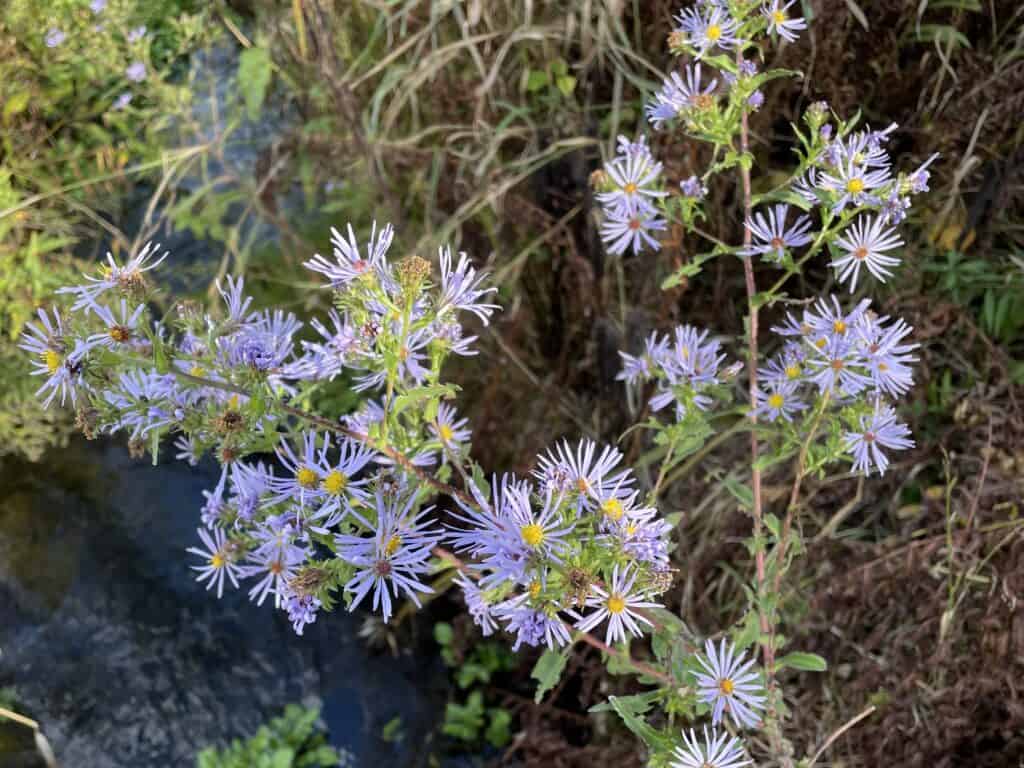
3. Calico aster: With white flowers scattered on its long, horizontal branches, the calico (Symphyotrichum lateriflorum) is easy to spot. Averaging 30-80 cm in height, the inflorescences are small (about 1cm) with 8-15 white ray flowers. The disc flowers are usually yellow, becoming purple or brown. The flowers grow along the upper side of the branch.
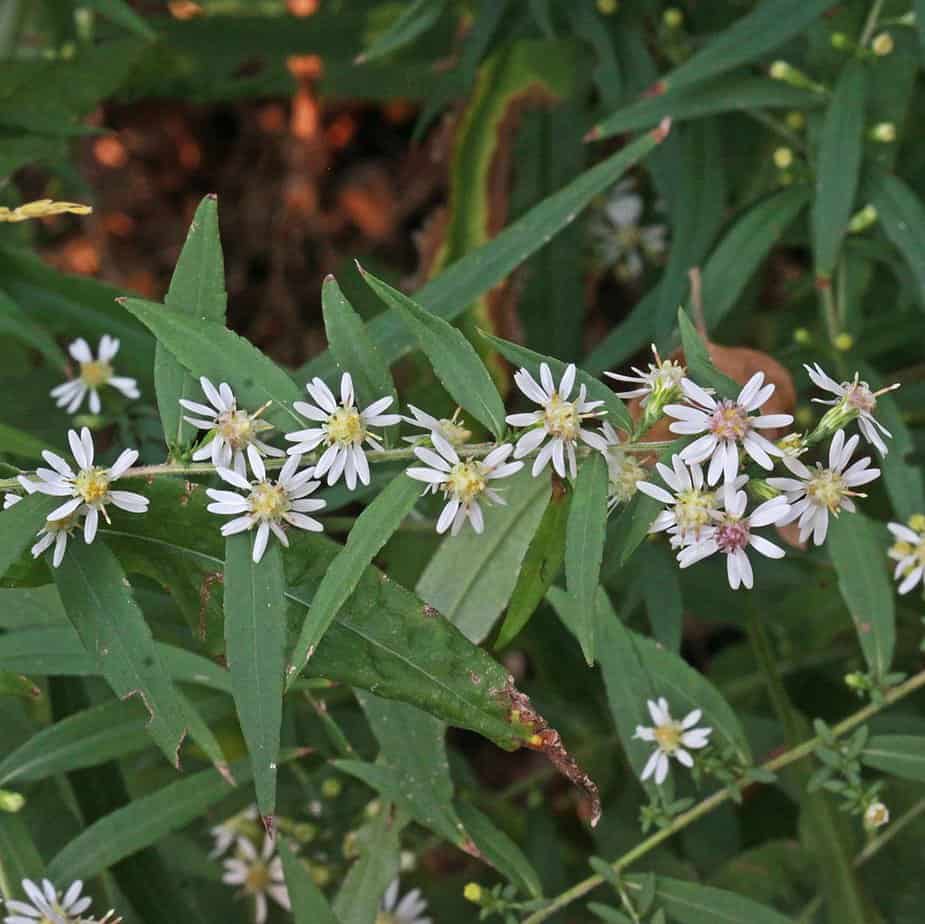
4. Panicled Aster: Very common and similar to the calico, panicled asters have white inforescences. There are 16 to 30 or more ray flowers and yellowish disc flowers, turning purple. Unlike the calico aster, the flowers are spread out and not just on one side of the stem. The leaves are long and narrow. A key identification feature is the presence of curly, spiral-shaped dead leaves along the stem. This aster often grows in low, relatively moist areas.
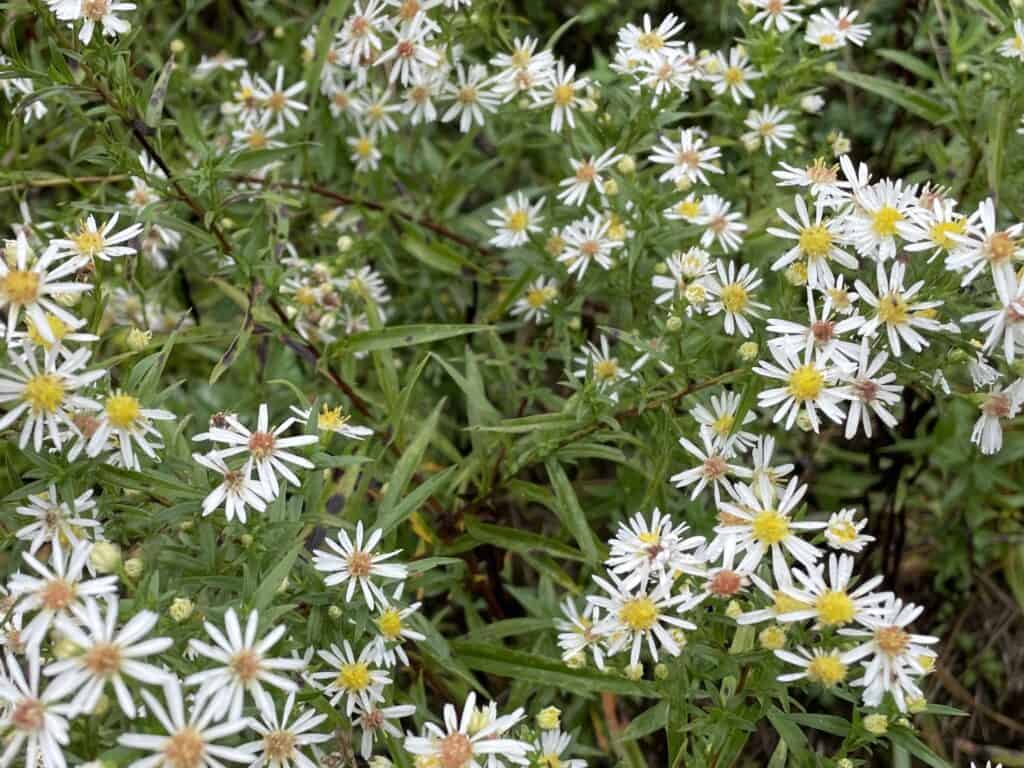
5. White heath aster: Like the calico, heath asters (Symphyotrichum ericoides) have numerous white inflorescences. However, they are smaller (less than 1cm) with very short ray flowers. They are also closely crowded or overlapping along the stems. The leaves are tiny, rigid, and reminiscent of heather, hence the name. The disc flowers are yellow before eventually turning brown. White asters like the heath and calico are usually the last wildflowers still in bloom after Thanksgiving.
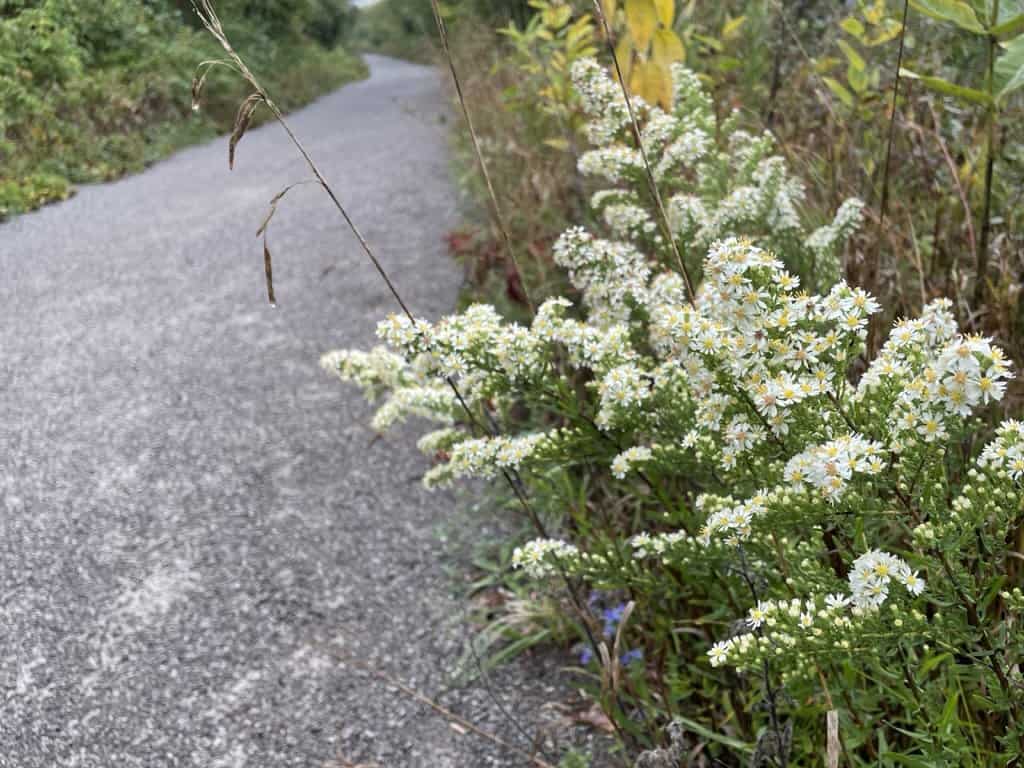
6. Blue wood aster: Growing in more shaded areas such as along the edge of a forest, common blue wood asters (Symphyotrichum cordifolium) have heart-shaped leaves which makes identification easy. I found lots just east of the bridge over Jackson Creek, near the Parkhill Rd parking lot. The ray flowers (8-15) are usually pale blue, while the disc flowers are yellow becoming purple. Some books call this species heart-leaved aster.
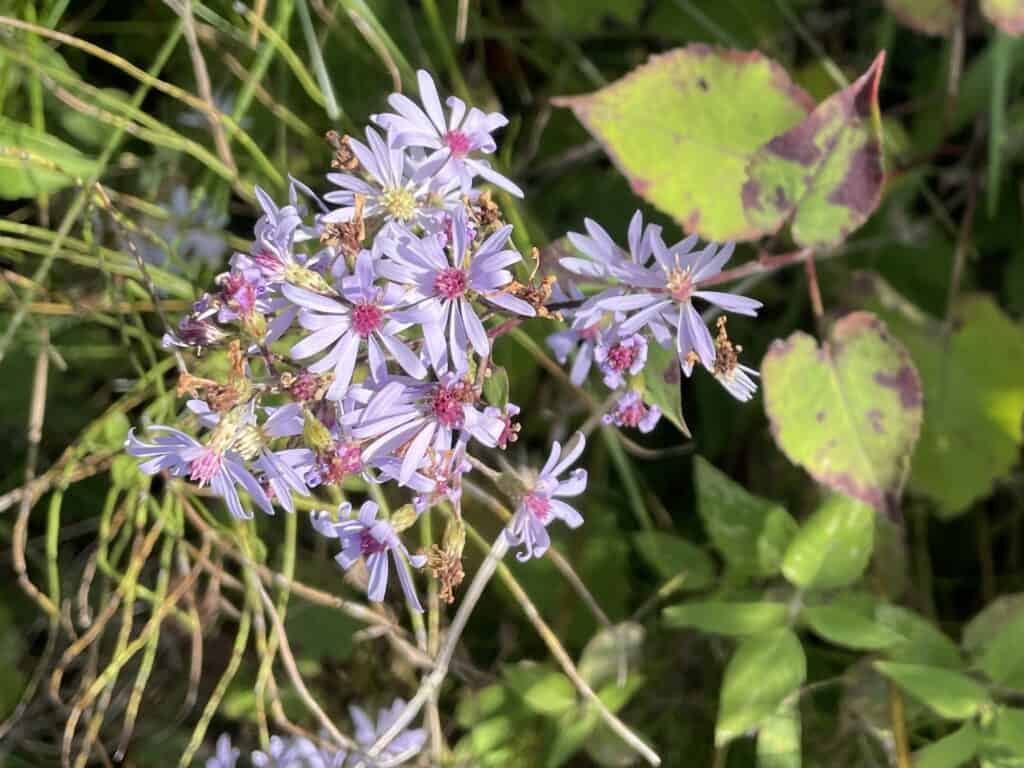
7. Large-leaved aster: Although I didn’t find any growing along the rail-trail, another common species to learn is the large-leaved aster (Eurybia macrophyllus). They are denizens of woodlands like Mark S. Burnham Provincial Park and have large (up to 15 cm), somewhat heart-shaped basal leaves. Large-leaved asters often form large colonies with only a few plants flowering. The inflorescences are large (2-4 cm) with 9-16 white or violet ray flowers. The disc flowers are yellow becoming purple. I’ve always had this zero-maintenance species in my shade gardens.
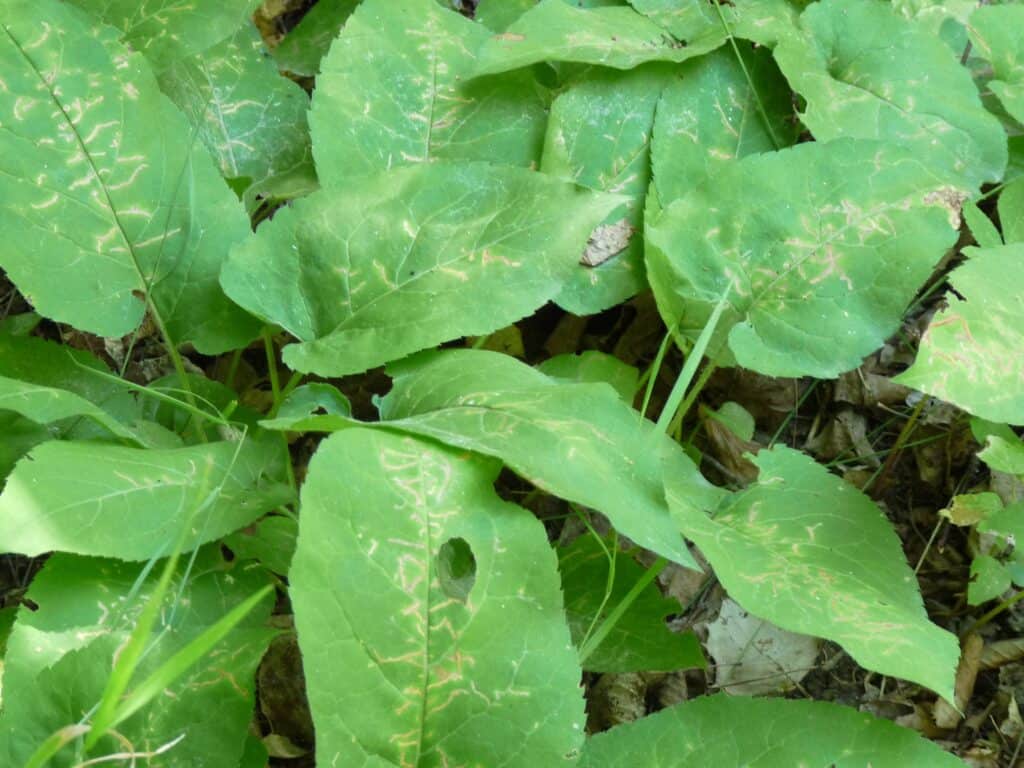
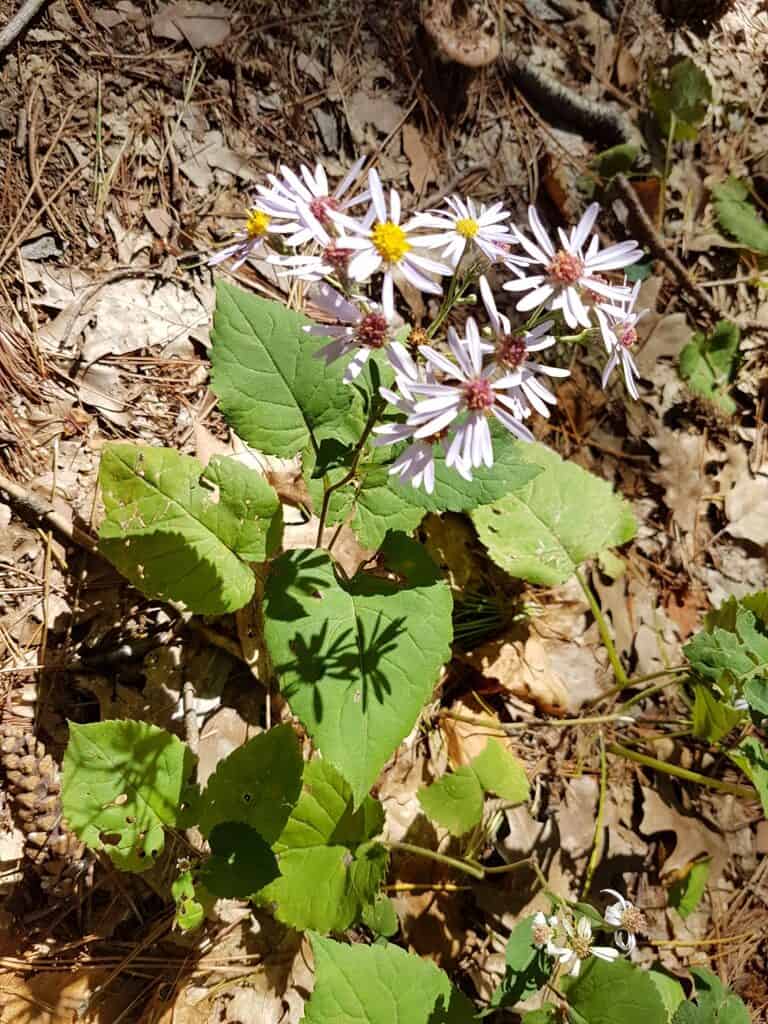
As much as asters strike a note of melancholy, representing summer’s final wildflower offering, they also add delicacy to the autumn landscape and are a beautiful reminder of the changing seasons.
Catchacoma forest news
Katie Krelove, a campaigner with Wilderness Committee, sent me the following update on happenings at the Catchacoma Old Growth Forest, located just north of Catchacoma Lake.
“Hosted by Ancient Forest Exploration & Research, Wilderness Committee, The Catchacoma Forest Stewardship Committee (CFSC) and local community members, three intrepid new researchers continued collecting information this summer on the biodiversity of this rare forest type. Species surveys and habitat assessments were conducted from July to August. In that brief time, the trio identified 317 different species – from plants and fungi to reptiles, fish and more.
Over 500 species have now been documented in this old growth hemlock forest ecosystem including species-at-risk such as Algonquin wolf, black ash, and five-lined skink. These findings strengthen the CFSC’s ongoing efforts to conserve this remarkable and accessible site for wildlife protection, public use, carbon storage, education and research. The ball is now in the court of Ontario’s Minister of the Environment to go forward with the CFSC’s request for protection.
You can help by emailing the Minister at minister.mecp@ontario.ca to express your support to conserve Catchacoma Old Growth Forest. The CFSC will also continue to hold public hikes and events this fall and winter. To get on the mailing list, email katie@wildernesscommittee.org”
CLIMATE CHAOS UPDATE
Vote for the climate! The most important individual climate action you can take right now is to vote with climate top of mind in the October 24 municipal election. Internet voting starts October 1. To learn how sitting councillors voted on climate-related issues and where current candidates stand (as based on a questionnaire they received), go to https://forourgrandchildren.ca/2022-municipal-election/ As you will see, not all of the ward candidates in Peterborough bothered to complete the survey. Their non-response speaks volumes.
Upcoming events: On Sept. 26, from 4 to 7:30pm, For Our Grandchildren is holding a “Protect the Planet” event to mark the third anniversary of the Peterborough Declaration of the Climate Emergency. Gather at Millennium Park for a dance featuring the Weber Brothers and Irish Millie. At 6:30, participants will walk up George St. to Confederation Park to listen to speakers and hold space around City Hall.
Carbon dioxide: The atmospheric CO2 reading for the week ending September 17 was 416.05 parts per million (ppm), compared to 413.07 ppm a year ago. Rising CO2 means more climate catastrophes ahead.